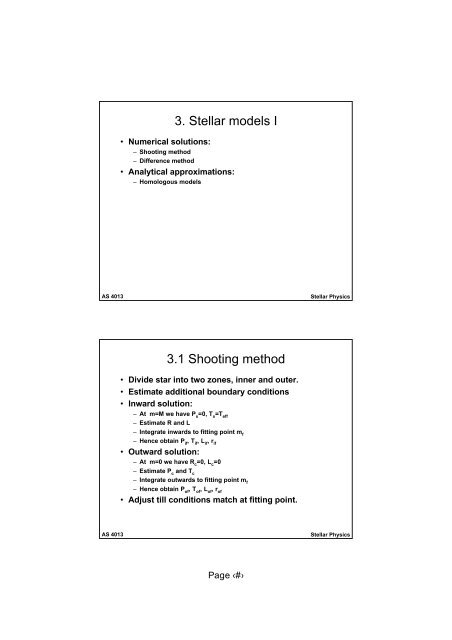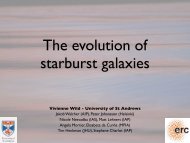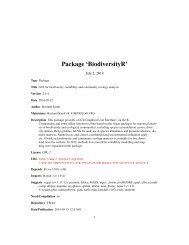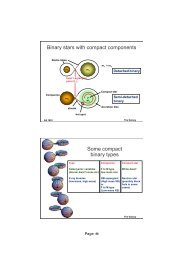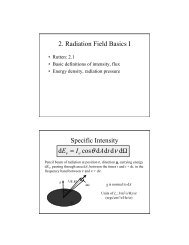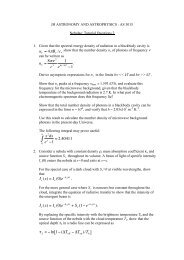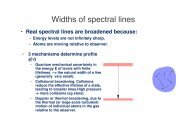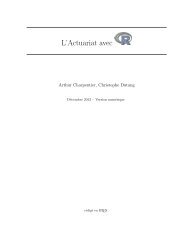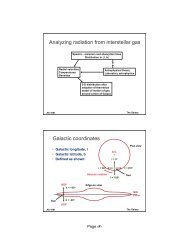3. Stellar models I 3.1 Shooting method
3. Stellar models I 3.1 Shooting method
3. Stellar models I 3.1 Shooting method
You also want an ePaper? Increase the reach of your titles
YUMPU automatically turns print PDFs into web optimized ePapers that Google loves.
• In general:Matching at fitting point• Repeat inward solution:– with R+dR, L– with R, L+dL• Repeat outward solution:– with P c+dP c,T c– with P c,T c+dT c• From resulting changes in r if, r ofetc formderivatives:AS 4013<strong>Stellar</strong> PhysicsDifferential corrections• Now correct the original estimates for R, L, P c, T cby solving:• for dR, dL, dP c, dT c. Repeat until dP f< e, etc wheree is some suitably small number.AS 4013<strong>Stellar</strong> PhysicsPage ‹#›
<strong>3.</strong><strong>3.</strong>1 Mass continuityAS 4013<strong>Stellar</strong> Physics<strong>3.</strong><strong>3.</strong>2 Hydrostatic equilibrium• Can use H.E. similarly to show that:• Write equation of state as a power law:• Equate the two expressions for P above anddifferentiate:AS 4013<strong>Stellar</strong> PhysicsPage ‹#›
<strong>3.</strong><strong>3.</strong>3 Energy and transport equations• Treat in same way as mass continuity andhydrostatic equilibrium equations• Adopt power laws for dependence of energygeneration and opacity on local density andtemperature:AS 4013<strong>Stellar</strong> Physics<strong>3.</strong><strong>3.</strong>4 Power-law relations• Can we predict how stellar properties vary withmass using an analytic treatment?• i.e. we want to construct relations of the form:• Substitute these into expression found in Section<strong>3.</strong><strong>3.</strong>2 for hydrostatic equilibrium:AS 4013<strong>Stellar</strong> PhysicsPage ‹#›


